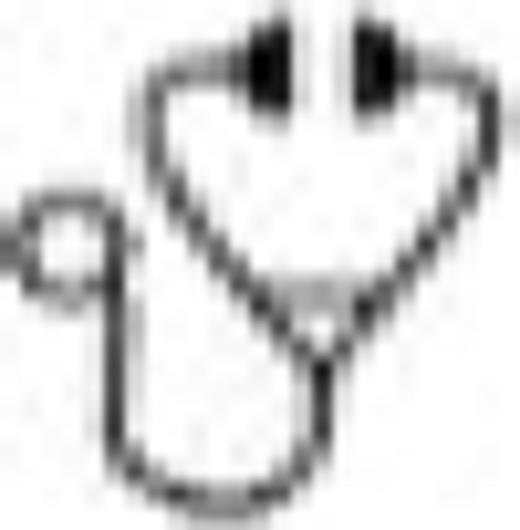Abstract

Background
Induction therapy followed by autologous stem cell transplantation (ASCT) is the standard of care for patients with symptomatic multiple myeloma less than 66 years old. The quality of response to the induction treatment is an important prognostic factor and is predictive of progression free survival (PFS) following ASCT. The triplet combinations bortezomib-thalidomide-dexamethasone (VTD) and bortezomib-cyclophosphamide-dexamethasone (VCD) have demonstrated high response rates in prospective phase 2 and phase 3 clinical trials, they are 2 of the most commonly used induction regimens prior to ASCT, and are both recommended in the International guidelines. To date, no comparative data from prospective randomized trials of the safety and efficacy of VTD vs VCD are available. This provided the rationale for the phase 3 investigation of VTD vs VCD prior to ASCT in patients with de novo MM in this randomized multicenter study (NCT01564537).
Methods
Patients with de novo symptomatic MM less than 66 years old were prospectively randomized to receive either 4 cycles of VTD (arm A) or 4 cycles of VCD (arm B) followed by ASCT. The VTD regimen consisted of four 21-day cycles of bortezomib 1.3 mg/m²/d, subcutaneously (SC) D1, 4, 8 and 11, Dexamethasone 40 mg/d, PO D1 to 4, D9 to 12 and Thalidomide 100 mg/d, PO D1 to D21. The VCD regimen consisted of four 21-day cycles of bortezomib 1.3 mg/m²/d, SC D1, 4, 8 and 11, Dexamethasone 40 mg/d, PO D1 to 4, D9 to 12 and Cyclophosphamide 500 mg/m²/d, PO D1, 8, 15. Patients were stratified according to ISS (1-2 versus 3) and cytogenetics (high-risk defined by 17p deletion and t(4;14) versus other).The primary endpoint was very good partial response (VGPR) rate following 4 cycles. Response was assessed in a central lab according to the IMWG criteria. Assuming a VGPR rate of 60% in the VTD arm versus 45% in the VCD arm (15% difference), the possibility to detect a statistically significant difference required the enrolment of 340 patients overall (170 per arm). Adverse events were graded using the NCI CTCAE catalogue, version 4.0.
Results
From 11/2013 to 02/2015, 358 patients were enrolled into the study. 18 were screening failures, and 170 were randomized each to arm A (VTD) and arm B (VCD). The median age was 60 years (range, 26-65), 62% of the patients were male, and overall, the patient characteristics were well-balanced across the 2 arms of the study. The median number of induction cycles administered in both arms was 4 (1-4). On an intent-to-treat basis, the overall response rate (> partial response [PR]) was 92.3% in arm A, including a 10.7% complete response (CR) rate and a VGPR rate of 66.7%, while in arm B the overall response rate was 84%, with a 9.5% CR and a 56.2% VGPR rate. VGPR and PR rates were significantly higher in the VTD arm with p-values of 0.04 and 0.02, respectively. Seven patients died during induction therapy (2%), 3 in arm A from infections (2) and pulmonary embolism (1), and 4 in arm B from progression to extramedullary myeloma (2) and infections (2). Grades 3 / 4 peripheral neuropathy occurred in 4% and 2.2% in Arm A and B, respectively. Grade 3/4 neutropenia was seen in 11.9% vs 22.5% in Arm A and B, respectively.
Conclusion
This trial is the first prospective randomized comparison of 4 cycles of VTD versus 4 cycles of VCD administered as induction therapy prior to ASCT. VTD was shown to be significantly superior to VCD in terms of VGPR and PR rates. Neuropathy rates low in both arms, while neutropenia was more frequent with VCD.
Moreau:Millennium: Honoraria, Membership on an entity's Board of Directors or advisory committees; Bristol-Myers Squibb: Honoraria, Membership on an entity's Board of Directors or advisory committees; Celgene: Honoraria, Membership on an entity's Board of Directors or advisory committees; Novartis: Honoraria, Membership on an entity's Board of Directors or advisory committees; Janssen-Cilag: Honoraria, Membership on an entity's Board of Directors or advisory committees. Hulin:Celgene Corporation: Honoraria; Janssen: Honoraria; Bristol Myers Squibb: Honoraria; Amgen: Honoraria. MACRO:celgene: Membership on an entity's Board of Directors or advisory committees; jansen: Membership on an entity's Board of Directors or advisory committees; millenium: Membership on an entity's Board of Directors or advisory committees. Garderet:Bristol-Myers Squibb: Consultancy. Stoppa:Celgene: Consultancy, Honoraria, Research Funding; Amgen: Consultancy, Honoraria; Novartis: Consultancy, Honoraria; Janssen: Consultancy, Honoraria. Facon:Janssen: Membership on an entity's Board of Directors or advisory committees, Speakers Bureau; Millenium: Membership on an entity's Board of Directors or advisory committees; Onyx: Membership on an entity's Board of Directors or advisory committees; BMS: Membership on an entity's Board of Directors or advisory committees; Celgene: Membership on an entity's Board of Directors or advisory committees, Speakers Bureau; Novartis: Membership on an entity's Board of Directors or advisory committees; Amgen: Membership on an entity's Board of Directors or advisory committees; Pierre Fabre: Membership on an entity's Board of Directors or advisory committees. Laribi:Hospira SAS: Research Funding. Avet-Loiseau:jansen: Membership on an entity's Board of Directors or advisory committees; onyx: Membership on an entity's Board of Directors or advisory committees; BMS: Membership on an entity's Board of Directors or advisory committees; millenium: Membership on an entity's Board of Directors or advisory committees; millenium: Membership on an entity's Board of Directors or advisory committees; celgene: Membership on an entity's Board of Directors or advisory committees; jansen: Membership on an entity's Board of Directors or advisory committees; onyx: Membership on an entity's Board of Directors or advisory committees; BMS: Membership on an entity's Board of Directors or advisory committees. Attal:jansen: Honoraria; celgene: Membership on an entity's Board of Directors or advisory committees.
Author notes
Asterisk with author names denotes non-ASH members.

This icon denotes a clinically relevant abstract

This feature is available to Subscribers Only
Sign In or Create an Account Close Modal